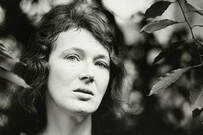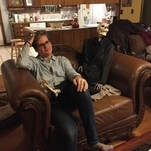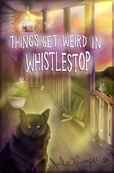Sacred Chickens
Menu
SACRED CHICKENS
Ruminations on Gender and Subjugation in Ashputtle, or The Mother’s Ghost by Angela Carter12/19/2018  Subjugated Gender in Ashputtle by Jarad Johnson Gender and the ideologies surrounding are integral parts of our everyday lives. We see it in the way we dress ourselves, the different shampoos for men and women, what jobs are stereotypically done by men and women, and so on and so forth. The outward expression of gender, and thus the ideology of gender itself, is bombarding us every single minute of every day. It follows then, that if this gender ideology ingratiates itself in our lives, it’s also in our books, and appears everywhere in them. We use it to draw the line on what is male and what is female, leaving no room in between those two categories. However, once someone begins to study the concept of gender, then those categories become somewhat meaningless, and our understanding of gender is then challenged. But what then is the exact definition of gender? The answer is somewhat vague, as gender’s meaning and interpretation has become very ambiguous and multilayered, as such a complicated topic should be. However, it can be said without a doubt that gender and sex are not synonymous with each other, as many people often falsely conflate them together. Sex is usually used to refer to the biological aspects of a person, such as their reproductive organs. Gender occurs in the mind, and in the society. Take, for example, the story of Cinderella, and the trying on of the glass slipper. There is a modern rendering of this story called, “Ashputtle, or the Mother’s Ghost,” by Angela Carter where the slipper scene is portrayed as an act of, “Ritual Humiliation.” Instead of the Prince falling in love with Cinderella because he loves her, or any woman really, she has to first meet a set of requirements to prove herself worthy of his standards and expectations, and she has to, literally and figuratively, fit into the role she is going to play. She cannot be just anyone, because the prince went all over the kingdom to every single woman, some of whom he could have very easily fallen in love with. It was the woman who passed his test that he chose, a woman who met and was subjugated to his standards. But the term ritual also implies that this is not a onetime thing, this is something that must be continually and repeatedly done throughout her lifetime, if she is to stay in his favor. The term ritual also could imply sacrifice. Many women do sacrifice a great deal of things to aspire to the societal ideal of how a woman should think and act, such as their careers, their sense of self, etc. the slipper try on scene is really a broader metaphor for the patriarchal society we live in, the one that privileges being male (and white) above all else. For women to be accepted fully into that society, they must first follow all the rules of it, and then continually subjugate themselves before it. Those same rules can feel like a death or prison sentence to some, and the author expounds upon that idea in the story. Throughout, she makes references to coffins and shrouds, but in the third part of her story, she equates becoming a woman with a death. In the story, the mother of Ashputtle says, “I stepped into my mother’s coffin when I was your age.” The idea is, to become a woman, one must literally die, and relinquish many of the freedoms you had as a girl. The mother gives the daughter a red dress in the story as well, which gives rise to the notion that the girl is entering puberty, which many people describe as becoming a woman. The idea of it being a kind of death, and at the same time a death sentence, is interesting because some cultures do view it that way, as a kind of rebirth into a new life. It is also interesting that the mother carries out and enforces the tradition of becoming a woman, which could alternatively be called accepting or enforcing the patriarchy, even though it is a male ideology and a worship of the ideal masculine, which by the very nature of its existence places women and anyone that does not meet those standards as a status of less than. This status also implies that women are there to serve the needs of men, the people with the most status. They are perceived to literally be there for men, not on a level playing field either, only as a props or helpers for men. Of course, these are traditional patriarchal values and ideals being discussed here, and many strides have been made from that point in recent years, but that ideology and that way of looking at the roles of women is still ingrained into the culture in many places. While it is clear that these attitudes perpetuate sexism and misogyny, it is not usually men that teach their daughter that ideals of the patriarchy, it is mothers. Mothers tell their daughters how to act, what to say, and how to think, and they teach them what it means to be a woman. They pass on their own internalized sexism, which society instilled in them, because a child will not often question the, “wisdom” of their parents at such a young age. That is crucial to the continuation of the patriarchy in many cases, because if you told people these things at a time when they were able to think critically and question them, the patriarchy would dwindle into nothingness within a couple of generations. Much like religion, it requires children to be indoctrinated into its belief system at a young age to thrive and maintain its power and authority. And thus, the cycle is perpetuated, and daughters are forced to step into their own coffins, if you will, among women at least. The perpetuation of the patriarchies ideals among men is entirely different, but still, it is ironic that one of the portions of the population that these ideals subjugate the most are so crucial in its continuing existence.  Bio: Jarad is the co-administrator and writer for Sacred Chickens, attends college at MTSU, loves tea, and tries to spend every spare second reading. Jarad is an English major. Bless his heart! Let's all light a candle for him and send him happy thoughts!
0 Comments
Leave a Reply. |

Click Photo above to buy ebook or paperback from Amazon.
Here's the link to Barnes and Noble Or order through your favorite independent bookstore! Categories
All
|
 RSS Feed
RSS Feed